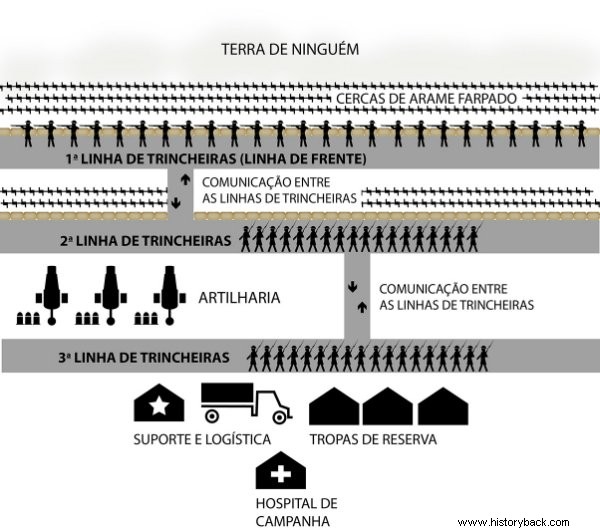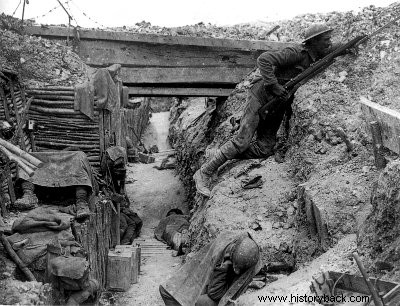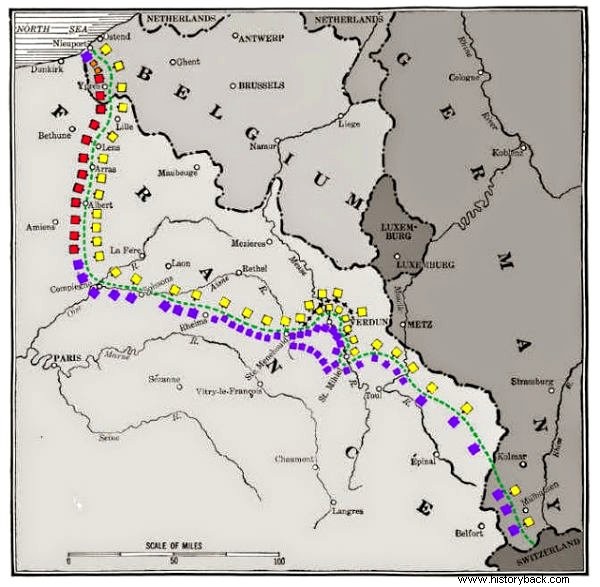The Trench Warfare (1915-1917) consisted of the phase of the First World War when this military tactic was widely used.
What happened?
The Trench War lasted two years and was the longest period of the conflict.
As the armies of the Allies and the Central Powers had very balanced forces, the solution was to dig trenches and from there try to advance or maintain the position on the ground.
The trenches consisted of trenches built on any terrain:from the flattest ones like those in France and even in the Alps. They were used for both offensive and defensive tactics.
They were about six feet deep, or big enough for a man to be fully covered and protected. In this way, the observation was made through telescopes and, more rarely, by observers.
Between the lines of trenches was a space called "no man's land". Traveling through this area meant being shot at from all sides. In fact, sticking his head out of the trench could cost a soldier his life.

The trenches became a complex where there were places reserved for rest, serious injuries and bathrooms. Sometimes shelters were built so that the soldiers could rest.
To support the walls, it was necessary to shore up the wood with earth. This was particularly complicated in humid terrain such as France and Belgium where rain filled the trenches and favored the transmission of diseases.

Although we had the image that soldiers, in a trench, were fighting all the time, the reality was quite different. In fact, men spent more time watching than fighting the enemy. This created a war of nerves and an immense strain on the combatants.
In any case, a raid on the trenches used to be deadly. First, attackers dropped bombs through cannons or airmen strafed enemy lines. Likewise, poisonous gas was released, in the hope that the soldiers would come out of their hiding places. This action could take hours or even days.
Only after that did the officers order the soldiers to advance towards the enemy trench, and even then, the success of the attack was not guaranteed.
Map
The western front measured about 645 km stretching from the English Channel in Belgium to the Swiss border. An estimated 400 km of trenches were dug along the western front.

Caption :
Yellow - GermanyPurple - FranceRed - EnglandOrange - BelgiumGreen - No Man's LandRead more:
- World War I
- Main Battles of World War I
- Brazil in World War I
- Phases of the First World War
- Treaty of Versailles
- Causes of World War I
- Consequences of the First World War
- Films about the First World War
